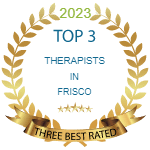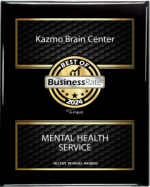Autism is not a single disorder, but a spectrum of closely related disorders with a shared core of symptoms. Every individual on the autism spectrum has problems to some degree with social interaction, empathy, communication, and flexible behavior. But the level of disability and the combination of symptoms varies tremendously from person to person. Two kids with the same diagnosis may look very different when it comes to their behaviors and abilities.
If you’re a parent dealing with a child on the autism spectrum, you may hear many different terms including high-functioning autism, atypical autism, autism spectrum disorder, and pervasive developmental disorder. These terms can be confusing, not only because there are so many, but because doctors, therapists, and other parents may use them in dissimilar ways.
But no matter what doctors, teachers, and other specialists call the autism spectrum disorder, it’s your child’s unique needs that are truly important. No diagnostic label can tell you exactly what challenges your child will have. Finding a treatment that addresses your child’s needs, rather than focusing on what to call the problem, is the most helpful thing you can do. You don’t need a diagnosis to start getting help for your child’s symptoms.
thorough evaluation. Your doctor can help you figure out whether your child has Autism Spectrum Disorder and how severely they are affected.
Keep in mind that just because your child has a few autism-like symptoms, it doesn’t mean they have Autism Spectrum Disorder. Autism Spectrum Disorder is diagnosed based on the presence of multiple symptoms that disrupt a person’s ability to communicate, form relationships, explore, play, and learn.
Social Behavior and Social Understanding
Basic social interaction can be difficult for children with autism spectrum disorders. Symptoms may include:
- Unusual or inappropriate body language, gestures, and facial expressions (e.g. avoiding eye contact or using facial expressions that don’t match what they are saying).
- Lack of interest in other people or in sharing interests or achievements (e.g. showing you a drawing, pointing to a bird).
- Unlikely to approach others or to pursue social interaction; comes across as aloof and detached; prefers to be alone.
- Difficulty understanding other people’s feelings, reactions, and nonverbal cues.
- Resistance to being touched.
- Difficulty or failure to make friends with children the same age.
Speech and Language
Many children with Autism Spectrum Disorder struggle with speech and language comprehension. Symptoms may include:
- Delay in learning how to speak (after the age of two) or doesn’t talk at all.
- Speaking in an atypical tone of voice, or with an odd rhythm or pitch.
- Repeating words or phrases over and over without communicative intent.
- Trouble starting a conversation or keeping it going.
- Difficulty communicating needs or desires.
- Doesn’t understand simple statements or questions.
- Taking what is said too literally, missing humor, irony, and sarcasm.
Children with Autism Spectrum Disorder are often restricted, rigid, and even obsessive in their behaviors, activities, and interests. Symptoms may include:
- Repetitive body movements (hand flapping, rocking, spinning); moving constantly.
- Obsessive attachment to unusual objects (rubber bands, keys, light switches).
- Preoccupation with a narrow topic of interest, sometimes involving numbers or symbols (maps, license plates, sports statistics).
- A strong need for sameness, order, and routines (e.g. lines up toys, follows a rigid schedule). Gets upset by change in their routine or environment.
- Clumsiness, atypical posture, or odd ways of moving.
- Fascinated by spinning objects, moving pieces, or parts of toys (e.g. spinning the wheels on a race car, instead of playing with the whole car).
- Hyper- or hypo-reactive to sensory input (e.g. reacts badly to certain sounds or textures, seeming indifferent to temperature or pain).
How Children with Autism Spectrum Disorder play
Children with Autism Spectrum Disorder tend to be less spontaneous than other kids. Unlike a typical curious little kid pointing to things that catch their eye, children with ASD often appear disinterested or unaware of what’s going on around them. They also show differences in the way they play. They may have trouble with functional play or using toys that have a basic intended use, such as toy tools or cooking sets. They usually don’t “play make-believe,” engage in group games, imitate others, collaborate, or use their toys in creative ways.
Related Signs and Symptoms of Autism Spectrum Disorder
While not part of autism’s official diagnostic criteria, children with autism spectrum disorders often suffer from one or more of the following problems:
Sensory problems: Many children with autism spectrum disorders either underreact or overreact to sensory stimuli. At times they may ignore people speaking to them, even to the point of appearing deaf. However, at other times they may be disturbed by even the softest sounds. Sudden noises such as a ringing telephone can be upsetting, and they may respond by covering their ears and making repetitive noises to drown out the offending sound. Children on the autism spectrum also tend to be highly sensitive to touch and texture. They may cringe at a pat on the back or the feel of the certain fabric against their skin.
Emotional difficulties: Children with autism spectrum disorders may have difficulty regulating their emotions or expressing them appropriately. For instance, your child may start to yell, cry, or laugh hysterically for no apparent reason. When stressed, they may exhibit disruptive or even aggressive behavior (breaking things, hitting others, or harming themselves). The National Dissemination Center for Children with Disabilities also notes that kids with ASD may be unfazed by real dangers like moving vehicles or heights, yet be terrified of harmless objects such as a stuffed animal.
Uneven cognitive abilities: ASD occurs at all intelligence levels. However, even kids with average to high intelligence often have unevenly developed cognitive skills. Not surprisingly, verbal skills tend to be weaker than nonverbal skills. In addition, children with Autism spectrum disorder typically do well on tasks involving immediate memory or visual skills, while tasks involving symbolic or abstract thinking are more difficult.
Resources:helpguide.org







